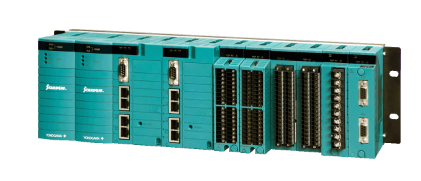ABB R1.SW2/3 is a modular control unit designed specifically for precise control of industrial processes. Its core positioning is a dual function module for strip tension measurement and system control, and it is a key component of ABB Millmate strip tension measurement system. It adopts a compact design, integrating force signal acquisition, data processing, and control output functions. It can independently complete tension detection and compensation, and can also be integrated into complex control systems such as rolling mill automation and material processing through modular expansion.
ABB R1.SW2/3 Industrial Control Module
Product Overview
ABB R1.SW2/3 is a modular control unit designed specifically for precise control of industrial processes. Its core positioning is a dual function module for strip tension measurement and system control, and it is a key component of ABB Millmate strip tension measurement system. It adopts a compact design, integrating force signal acquisition, data processing, and control output functions. It can independently complete tension detection and compensation, and can also be integrated into complex control systems such as rolling mill automation and material processing through modular expansion.
Compared to the high-power driving characteristics of PU517, R1.SW2/3 focuses more on medium and high-precision signal processing and local control, especially in the strip production process of the metallurgical industry. Through bidirectional force measurement and real-time compensation algorithms, it solves product quality problems caused by tension fluctuations and is the core detection and control component of cold rolling, acid washing, annealing and other production lines.
Specification parameters
(1) Core technical parameters
Measurement performance
Support vertical/horizontal bidirectional force measurement, compatible with Millmate system indenter; Tension measurement accuracy ± 0.5% FS
Power supply parameters
Wide range AC power supply 100-240V AC, power consumption ≤ 15W, with overvoltage protection (withstand 264V AC for 10s)
Physical specifications
Size 23mm × 26mm × 5mm (compact design), weight ≤ 50g, compatible with standard DIN rail installation
Environmental adaptability
Working temperature -20 ℃~+70 ℃, humidity 5%~95% RH (no condensation), in compliance with EMC electromagnetic compatibility standards
Connection method
Bottom pluggable screw terminal block, supporting quick wiring; Built in dedicated cable grounding point, grounding resistance ≤ 4 Ω
(2) System adaptation parameters
Compatible system: Seamless integration with ABB Millmate tension measurement system, supporting linkage with ACS880 transmission device
Signal output: Analog 4-20mA (12 bit resolution), digital switch signal (24V DC compatible)
Protection level: Module body IP20, compatible with installation box up to IP54 (suitable for metallurgical dust environment)
3、 Performance characteristics
Bidirectional high-precision measurement: Through the built-in signal conditioning circuit, the bidirectional detection of vertical and horizontal force components is achieved. Combined with the electrical tare weight compensation function, the tension measurement accuracy of ± 0.5% can still be maintained during high-speed operation of the rolling mill, solving the problems of strip deviation and uneven stretching.
Industrial grade environmental tolerance: Breaking through the 60 ℃ temperature limit of conventional control modules, it can operate for a long time in a high temperature environment of 70 ℃ without the need for additional heat dissipation devices; Compliant with EMC standards, it can still stably output signals in the strong electromagnetic interference environment of the rolling mill.
Quick installation and maintenance: The bottom pluggable terminal block design reduces wiring time by 50%, and the built-in status indicator light displays real-time power and signal status, eliminating the need for professional tools for troubleshooting.
Strong system synergy: As the core component of the Millmate system, it can directly receive pressure head signals and output compensation instructions to the transmission system, with a response delay of less than 100ms, achieving closed-loop control of tension detection and adjustment.
Working principle
Signal acquisition link: The module is connected to the tension head installed under the bearing seat through a dedicated cable, and collects the vertical force signal generated when the strip passes through the guide roller. After processing by the built-in amplification circuit, it is converted into a standard electrical signal.
Data processing mechanism: The CPU calculates the actual tension of the strip based on the preset tare compensation parameters (offsetting the self weight of the rollers and bearings), compares it with the set threshold, generates an adjustment signal, and outputs it to the actuator through an analog or digital interface.
Closed loop control process: When the tension of the strip deviates from the set value, the module sends real-time compensation instructions to the frequency converter or servo controller, adjusts the motor speed to correct the tension, and the entire control cycle is less than 200ms, ensuring that the tension fluctuation range is controlled within ± 1%.
Precautions
Installation specifications:
The cable should be kept at a distance of ≤ 5m from the tension head, and shielded wire should be used and wired separately to avoid parallel connection with strong electrical cables (spacing ≥ 30cm);
The installation position should be far away from the vibration source of the rolling mill (such as the roller motor), and if necessary, shock-absorbing brackets should be installed.
Debugging points:
Before the first operation, tare weight calibration must be performed through the Millmate system software, and zero point setting must be performed under no-load conditions;
Matching the pressure head range (such as 0~50kN or 0~100kN) is required, as mismatched ranges will result in a decrease in measurement accuracy.
Maintenance requirements:
Clean the terminal contacts every 3 months, check the integrity of the cable shielding layer, and avoid signal interference;
Perform tension calibration once a year and verify measurement accuracy using a standard force source. If the deviation exceeds ± 1%, recalibration is required.
Safety Warning:
Before calibration and maintenance, it is necessary to cut off the power supply of the module and the upstream pressure head power supply to avoid equipment misoperation caused by erroneous signal output;
In metallurgical environments, module dust seals need to be checked every 6 months to prevent iron powder from entering and causing short circuits.

- User name Member Level Quantity Specification Purchase Date
- Satisfaction :
-









Email:wang@kongjiangauto.com




































































































































